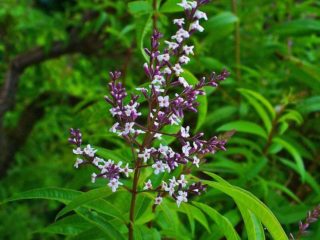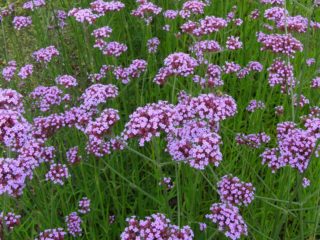Content
Verbena can be grown in a variety of ways. Since this perennial plant is heat-loving and does not tolerate winter in temperate climates, it is cultivated as an annual. The peculiarity of verbena is its almost continuous flowering throughout the season, so it is recommended to plant it as early as possible. It is because of this that seedlings are often used when growing it.
How does verbena reproduce?
Verbena is a perennial heat-loving plant, so in regions with cold climates it is grown as an annual. There are several ways to reproduce it:
- cuttings;
- seeds through seedlings;
- seeds in open ground.
The first method gives the largest amount of seed. The second is used when it is necessary to ensure the earliest planting of a plant in open ground.The latter is justified in climates with the onset of warm weather in mid-spring.
How to propagate verbena from cuttings
Planting material for this method of propagating verbena is prepared in the fall of last year. To implement it, it is necessary to dig up the bushes together with a small lump of earth before the onset of frost and place them in a cool room, the temperature in which is + 8-10 ° C. The ideal option for storage is an insulated balcony or outbuilding.
The actual cutting process for planting in open ground is carried out in early March. If you plan to grow the plant at home or in a greenhouse, you can do this earlier.

Verbena cuttings are obtained from the tips of the shoots; they must have at least four pairs of leaves
They are cut off with a disinfected knife or garden shears. The cut should be treated with crushed coal. The top with the remains of flowers should be removed.
It is advisable to carry out rooting in a substrate consisting of equal parts of sand and peat. At the same time, the cuttings are buried to the level where the lowest pair of leaves was located. It is recommended to cover the top of the container with film to create a greenhouse effect. The root system will be formed in about a month.
Rooted cuttings are planted in open ground as soon as weather conditions allow, namely in the absence of night frosts.
How to sow verbena for seedlings
Sowing verbena seeds for seedlings is usually carried out in early March. Growing soil - a mixture of garden soil and perlite in a 1 to 1 ratio.

The seeds are not buried, but placed on top of the ground and covered with 5-10 mm of humus
Next, they are placed under glass and kept at a temperature of + 18-20 ° C. Condensation is removed from it daily.
After 3-4 weeks, all the seeds germinate. The glass is removed, and the box with young verbenas is transferred to a cool place. Water the seedlings every 2-3 days. Planting in open ground should occur when the likelihood of return frosts goes away.
Features of growing verbena flowers in open ground
The plant is relatively unpretentious and does not require any special techniques when growing. If group planting is used, then verbena does not even need to loosen the soil or weed out weeds. It can be grown in areas with any level of light. There are also no requirements for the composition of the soil; the degree of its water permeability is much more important. The only truly serious condition for growing a crop is the temperature regime. The plant practically does not tolerate frost.
How to plant verbena in open ground
The plant has a compact root system, so it can be planted in open ground not only directly in flower beds, but also in flowerpots or even small containers, such as flowerpots.
When to plant verbena in open ground
The time when the plant can be transferred to open ground depends on the climatic characteristics of the area. For example, in the southern regions planting is permissible even in early or mid-April.In the central zone, this time falls in the first ten days of May, and in more northern regions - closer to its middle or end.
Site selection and soil preparation
Verbena can grow in any corner of the garden, since the degree of lighting does not matter for it. The plant takes root equally well in sunny areas and in the shade. No preliminary soil preparation is required, other than digging and removing plant debris.
How to transplant verbena seedlings
As noted earlier, verbena has a compact root system, so the process of transplanting seedlings into open ground is quite simple and does not require any special measures.
Bushes should be placed at a distance of 20 cm from each other. Creeping varieties need to be planted a little more freely - up to 30 cm. The depth of the holes is no more than 10 cm. A little drainage in the form of broken bricks is poured into the bottom of each recess. If the soil is too dry, it is recommended to pour 0.4-0.5 liters of water into the holes.

A bush with a lump of earth is placed in a hole and covered with soil.
Another 0.5 liters of liquid should be poured under it. In rainy weather or in case of sufficiently wet soil, this may not be necessary.
How to grow verbena
Caring for the plant is quite simple. It consists of soil treatment in the first month after planting, watering and fertilizing. The plant has good immunity and is practically not susceptible to pest attacks. However, this will be possible if excessive thickening of the plantings is avoided and there is no excess moisture.
Watering and fertilizing
Watering is carried out as the top layer of soil dries. Usually the time between them is 3-5 days.The standards are determined visually - the soil should remain slightly moist after this procedure. During flowering, it is recommended to increase the intensity of watering to once every 2-3 days.
Fertilizing is done once a season (usually a week before flowering) and is carried out using a complex fertilizer for ornamental plants. Instead, you can use organic matter in the form of rotted manure or compost.
Weeding, loosening, mulching
Weeding and loosening of the soil should be done only in the first month after planting the plant in open ground. In the future, when the bushes grow, these measures will not be required.

Loosening of the soil is carried out before each watering, but it is not done deeply, 2-3 cm
Weeding is done once a week. At the end of the first month, the soil is mulched with straw and no more loosening is done during watering.
Trimming
Since verbena is grown as an annual plant, there is no need to form a bush. Sanitary pruning involves removing faded inflorescences.
Caring for verbena after flowering
With proper watering and fertilizing, verbena continues to bloom until late autumn (the onset of the first frost). Therefore, the plant does not require any specific care, other than the previously mentioned removal of inflorescences.
At the end of the season, if there is no need to form cuttings for the next year, the verbena is simply pulled out of the ground and destroyed, and the area is dug up, adding some kind of organic fertilizer.
Wintering
Verbena overwinters only in the southern regions. In this case, the shoots should be cut to the very roots, and the bush should be covered with spruce branches.
Pests and diseases
In general, verbena is well resistant to most common diseases.However, if you do not follow the rules of agricultural technology, in particular, do not maintain the watering norm, the plant may be attacked by a fungal infection.
The most common disease of verbena is powdery mildew. Perhaps it does not appear only in arid regions. Even when growing a plant as an annual, the probability of contracting powdery mildew is about 50%.

When affected by powdery mildew, verbena leaves first turn purple and then die
Methods for treating the disease are standard: infected foliage must be removed from the bush, after which it begins to be sprayed. In this case, Bitertalon, Difenoconazole, Ridomil Gold, etc. are used.
In case of advanced infection, when plaque covers the entire plant and there is a high probability of rot, use Fosetil.
Verbena pests include aphids and leaf miners. Traditionally, their activity begins in mid-May.

Aphids prefer to be on the underside of verbena leaves.
Traditional methods (soap solutions, ash diluted in water, etc.) are ineffective in this case, since it is difficult to process a large amount of relatively small foliage. Therefore, it is best to use spraying. As a treatment agent, it is recommended to choose insecticides of the neonicotinoid or carbamate groups: imidacloprid, pymetrozine, pirimicarb.
Mining flies look little different from the same fruit flies. They lay eggs on the plant, from which larvae hatch. Young caterpillars break through passages in the plates, called mines.

The result of the activity of the leaf miner larva is clearly visible on the leaves of the plant.
To get rid of the pest, you should remove the affected fragments of the bush and spray the remaining part with insecticides.
To combat the leafminer, you can use the previously described anti-aphid preparations. In addition, Plenum, sold in the form of water-dispersible granules, works well against the pest.
Is it possible to plant verbena before winter?
It makes sense to plant verbena in open ground at the end of the season only in the southern regions, where the negative temperature does not fall below - 3 °C. The root system of the plant has the same frost resistance as the stems and leaves. Therefore, you should not hope that the bush will overwinter.
Planting seedlings before winter is also not justified. First, the plants will have their annual rhythm of activity and rest shifted. Secondly, the seeds will require mandatory stratification, leading to a decrease in the percentage of germination. Thirdly, by mid-winter the size of the seedlings will be so large that you will have to think about transplanting the plant into a larger container. That is, we will not be talking about gardening, but about growing verbena at home.
Conclusion
Growing verbena in cold climates is possible both by seedlings and without seedlings. In any case, you need to understand that this perennial does not tolerate frosts with temperatures dropping to -3 ° C, that is, in most of the CIS it can only be cultivated as an annual plant.If a lot of planting material is required, it will be justified to propagate verbena using cuttings harvested in the fall.








